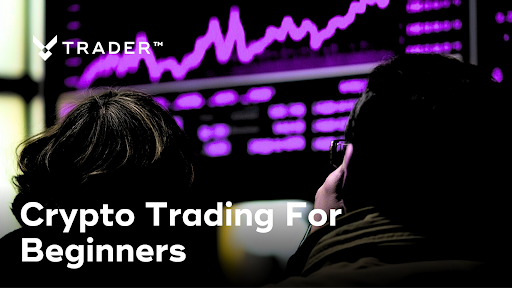Introduction Cryptocurrency trading
So, you’re thinking about dipping your toes into cryptocurrency trading, huh? Maybe you saw some guy on X bragging about his Bitcoin gains, or your cousin won’t shut up about Ethereum’s “potential.” Either way, welcome to the wildest financial rodeo out there. Crypto trading’s like trying to ride a bucking bronco—thrilling, a little scary, and definitely not for everyone. But if you’ve got the itch, let’s unpack what it’s all about, no jargon overload.
At its core, crypto trading is buying and selling digital coins—Bitcoin, Ethereum, maybe something quirky like Doge or Shiba Inu—to make a profit off price swings. This market’s massive, clocking in at $5.81 billion in 2023 and supposedly headed for $16.95 billion by 2032, if the number-crunchers are right. Why’s it such a big deal? Because crypto prices are like that friend who’s always overreacting—one day they’re skyrocketing, the next they’re in the gutter. I once watched a coin I bought shoot up 30% overnight, only to crash while I was brushing my teeth the next morning. That’s the game.
Here’s the kicker: those price swings are why people love it and why they lose sleep. You could double your money in a week, but you could also tank hard if you’re not paying attention. Research says crypto prices sometimes move in crazy bursts, like a flock of startled birds, so you’ve gotta be ready for anything. My first trade was a total rookie move—I threw $100 at some random coin because it “felt right.” Spoiler: it wasn’t right. Lesson learned: know your stuff and don’t bet the farm.
The magic behind crypto is blockchain, this super-secure digital ledger that doesn’t need banks or suits to keep things legit. It’s like a public diary everyone can read but nobody can scribble in. Cool, right? Except it’s not all smooth sailing. There’s no global rulebook, so one day your favorite coin’s legal, the next it’s banned somewhere. And blockchain’s got growing pains—trying to handle millions of transactions is like asking my old laptop to run a video game.
Wanna jump in? Don’t sweat the techy vibe too much. Start with a platform that doesn’t make you feel like you’re decoding hieroglyphics—Binance, Kraken, or Coinbase are solid picks with newbie-friendly guides. Toss in a small amount, like $20, to get a feel for it. Learn the basics: how to read price charts, when to hold, when to ditch. And brace for the emotional rollercoaster. FOMO’s a real jerk—I’ve bought coins just because everyone was hyping them, only to regret it when the hype fizzled. Stay chill, stick to a plan.
Why bother? Crypto’s open 24/7, so you can trade while the stock market’s snoring. It’s not tied to Wall Street, which is nice if you want to mix things up. Plus, blockchain’s transparency means no shady banker’s skimming your cash. But let’s be real: this isn’t a lottery ticket. You’ll mess up, probably more than once. I sure did—ask me about the time I thought I’d “diversified” by buying three coins that all crashed together.
Ready to saddle up? Pick a trusted platform, skim some free tutorials, and don’t go all-in on day one. Crypto trading’s a rush, but it’ll test your nerves. Keep your head, and you might just have a story to tell at the next family barbecue. Just don’t be like me and check your portfolio during dessert—it’s a vibe-killer.

Steve Gregory is a lawyer in the United States who specializes in licensing for cryptocurrency companies and products. Steve began his career as an attorney in 2015 but made the switch to working in cryptocurrency full time shortly after joining the original team at Gemini Trust Company, an early cryptocurrency exchange based in New York City. Steve then joined CEX.io and was able to launch their regulated US-based cryptocurrency. Steve then went on to become the CEO at currency.com when he ran for four years and was able to lead currency.com to being fully acquired in 2025.


